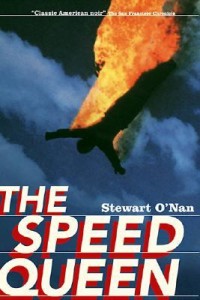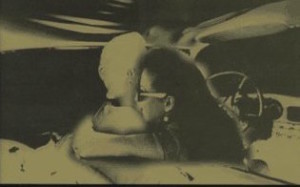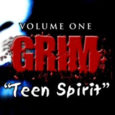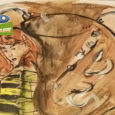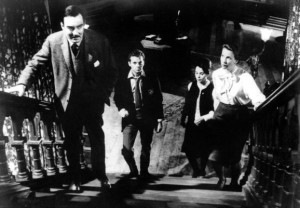What a time to be a Stephen King fan. While the industrious author continues to churn out well-received novels into the always grasping hands of his fans, the patience of King’s audience has been tried and tested by the near-constant flux in news of movie and TV adaptations. Finders Keepers (2015) continues the Mr. Mercedes’ Trilogy and King’s next short story collection, The Bazaar of Bad Dreams, is due out in November. However, The Stand and It remakes have appeared in the news regularly in the last few years, but most stories at this point can be lumped together as frustrating reports of revolving doors of casting, attached-with-a-worn-out-paperclip directors, and fickle studio commitment. For the King’s affectionately addressed “constant readers” the inconsistency is maddening. So, in the interest of treating your viral case of “pleasestop fucking with us Hollywood,” we prescribe up a dose of extra-curricular reading for Stephen King fans, starting with Stewart O’Nan’s The Speed Queen.
Often, King’s massive bibliography is dismissed as pulp that was published to stock that useless supermarket aisle with out of season halloween candy and tabloids. The Speed Queen embraces King’s place and power from the mass market paperback pile in its tragic tale of crystal meth-induced sprees and high speed car chases. The book is framed and told from the perspective of Marjorie, a woman on death row, to a tape recorder. Her life story, or as much of it as she can narrate in the dwindling hours on the eve of her execution for murder, is to be sent to none other than Stephen King, who purchased the rights in order to adapt her life into a book. Majorie became a Stephen King fan from the shelves of the prison library, where his works were always as well stocked as in any supermarket or drug store. King fans, of course, read that and feel it a fitting home for the writer of Rita Hayworth and the Shawshank Redemption and The Green Mile. Marjorie references and comments on many of his novels throughout her narration, which was as fun to read as her spiraling tale of crime and low living.
Marjorie is on the row for her involvement in the robbery of a Sonic Drive Through along with her boyfriend, Lamont, and her friend and sometimes lover, Natalie, who received no jail time for her involvement with their killing spree. Natalie, like Carrie’s Sue Snell, wrote a book about their murderous rampage that told one side of a thrilling and terrible tale, that naturally exonerated the writer from almost all wrong-doing. Marjorie’s own story and love affair with Lamont takes place in front of the seedy back drop of gas stations and drug dealers along America’s western highways.
I came upon this book in a quaint upstate New York town, the kind with antique stores and small little galleries to entertain traveling yuppies from Manhattan on autumn weekends. My mother and I liked this particular junk store that sold $5 blind bags. They were usually stuffed with things like collectible spoons from Niagra falls and chipped mugs, but the nice elderly lady who ran the place also always tried to include a book, a possible treasure amongst the junk. To be honest, in my bag on that particular day was a tome of a biography about Jimmy Hoffa, the labor union leader. I’m not sure if it’s a better story if my mother was sacrificing enough to swap with me, which is true, or if The Speed Queen had fatefully originated in my brown paper bag; King would like both tellings, I think.
I just about devoured the Speed Queen in one night. It is written in a style that King fans could claim O’Nan must have scammed from the man himself. I, however, had a different explanation for the similarities in writing and in the love of fast cars and classic western Americana. At that moment of my serendipitous discovery, I was probably around 14, which means I would have finished reading the Dark Tower series for the first time. I had never heard of Stewart O’Nan, but I had read enough Stephen King books to suspect that my train may have been traveling for a time on one of the paths of the beams, and that I had been passing through a thin space between my world and one where O’Nan is just another version of the Dark Tower author who wrote himself into his own novel; it’s not like King hasn’t done it before. It was too good a book to have been found in some junk store in Nowhere, New York unless I was meant to have it or there was something fantastical behind the finding. Maybe when you read it, you’ll get that feeling too.
Steward O’Nan, of course, is actually a real person (probably) and writer as well as a friend of Stephen King. They even collaborated on a novella together called “A Face in the Crowed” in 2012 and wrote a chronicle of the Red Socks’ 2004 season in “Faithful.”
You can find the Speed Queen on Amazon
What would you recommend your fellow King fanatics?
Kaitlyn D
Content Editor
“No live organism can continue for long to exist sanely under conditions of absolute reality; even larks and katydids are supposed, by some, to dream. Hill House, not sane, stood by itself against its hills, holding darkness within; it had stood for eighty years and might stand for eighty more. Within, walls continued upright, bricks met neatly, floors were firm, and doors were sensibly shut; silence lay steadily against the wood and stone of Hill House, and whatever walked there, walked alone.”
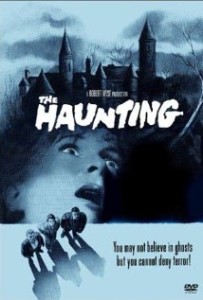 Once upon a time in middle school, my friends ditched me on Halloween. It’s one of the those heartbreaking memories that you’re sure will haunt you forever, and it does… at least until the next moment of preteen drama usurps it from memory. For me, that new horror occurred a few hours later when my mom comforted me with a Turner Classic screening of The Haunting (1963), not to be confused with the unwatchable 1999 remake with Catherine Zeta Jones and Liam Neeson. Please don’t confuse them. The former is a technical wonder of an adaptation of Shirley Jackson’s The Haunting of Hill House, which had the power to scare the internal angst right out of my night with little more industry tricks of the trade than some nifty camera, light, and sound effects. The question is of course (the same we asked of Orson Well’s The War of The Worlds) after ten years since my first watching and over 50 since it was first released, is The Haunting still scary?
Once upon a time in middle school, my friends ditched me on Halloween. It’s one of the those heartbreaking memories that you’re sure will haunt you forever, and it does… at least until the next moment of preteen drama usurps it from memory. For me, that new horror occurred a few hours later when my mom comforted me with a Turner Classic screening of The Haunting (1963), not to be confused with the unwatchable 1999 remake with Catherine Zeta Jones and Liam Neeson. Please don’t confuse them. The former is a technical wonder of an adaptation of Shirley Jackson’s The Haunting of Hill House, which had the power to scare the internal angst right out of my night with little more industry tricks of the trade than some nifty camera, light, and sound effects. The question is of course (the same we asked of Orson Well’s The War of The Worlds) after ten years since my first watching and over 50 since it was first released, is The Haunting still scary?
The classic chills in “The Haunting” resonated with an only-child of a single working parent: like the creaking of an old house after midnight and the quiet click of a door popping open in an empty apartment. These tropes usually appear in the first quarter of almost every modern horror movie, before the simple terrors are abandoned for an escalating parade of usually bad computer effects and make up. The Haunting, however, sets itself a part from its filmic descendants in the genre in that it doesn’t rely on edge-of-your seat anticipation of the next shot of gore or a 10th jump scare. The Haunting promises and delivers on a constant pressure of an off scene presence that twists the audience as much as it does the characters.
Ah, the characters. After I’ve blathered on about practical and minimalistic effects for two paragraphs, you’d think that the technical methods of story-telling overshadowed the actors and the roles that they play. Not so in The Haunting. The major players are Dr. Markway, a professor with a more than passing interest in the supernatural, rents Hill House to conduct observations of psychic and supernatural phenomena, Luke Sanderson, playboy nephew of the owner of Hill House who is tasked with overseeing the research, and their guests: Theodora “Theo” and Eleanor “Nell” Lance. Both are contacted by Dr. Markway who, through his research, identified events of psychic phenomena in their pasts. The good doctor believes that the presence in the wicked old house will be stimulated by those gifted with a sixth sense.
Theo and Nell as performed by Claire Bloom and Julie Harris, respectively, are two of the most fascinating characters that I have ever seen in the horror genre. Nell was a caretaker for an overbearing mother until the old woman’s death; a life that has readied her for a fragile, inexperienced, and lonely adulthood. Nell excepts Markway’s invitation as her first move toward independence from the shared car and the living room she occupies in her married sister’s home. She has little experience with adults, though she has a more impressive record with the supernatural than any of the other members of the group. Theo, as a perfect foil to Nell, is beautiful, independent, and used to being the center of attention of both men and women, perhaps due to her charisma and extrasensory perception. She agrees to sit in on Markway’s observation at Hill House after separating from her girlfriend. Theo is one of the earliest representations of a explicit homosexuality in American cinema that does not depict a lesbian character as predatory or deviant. Ok, maybe explicit is giving the film too much credit, but you can read more about the character here and know this movie would be perfect for a paper assignment in a gender in film or feminist theory class.
As the talent in the house, the women are the targets nearly all the clearly malevolent taunting while the men, as the audience’s surrogates on screen, can do little more than observe Nell and Theo as both are terrorized by whatever forces lurk in the dark. While Nell seemingly flourishes as an object of attention for the first time, Theo preys upon the woman’s insecurity and fragility in order to push Nell away. Like fast-made friends on the first day of school, their blossoming friendship of one night turns morphs into catty hostility over the course of their stay. If only 12 year-old me had been able to draw this out of the narrative, I could have felt far better about one shitty Halloween night.
Beyond the deteriorating relationship of Nell and Theo, the reason The Haunting is a perfect psychological supernatural story is that its characters are all symbols of how people experience horror. The skeptic young heir sees every creepy statue as pieces of art that he can hock to get his money’s worth out of the old house and is therefore rarely frightened. The doctor is fascinated by a harp that issues beautiful music without a player, but it neither terrifies or unsettles him. Both Nell and Theo came to Hill House with heightened psychic perceptions, but it is only fragile Nell that is driven to insanity after a life of neglect and loneliness. Whether entering a spooky graveyard, a ghostly mansion, or a dark movie theater, hants can do little more than rattle a chain or let out a ghoulish moan. There is terror only in what you bring with you.
Shirley Jackson is an icon, not only as a woman author in horror as legendary as Mary Shelley, but as the creator of many of your favorite horror tropes. Stephen King has cited her as a major influence in all his writing, which can be seen in Carrie and Rose Red, and I encourage everyone to check her out her work
Kaitlyn D
Senior Staff Writer
@deadrabbit92


